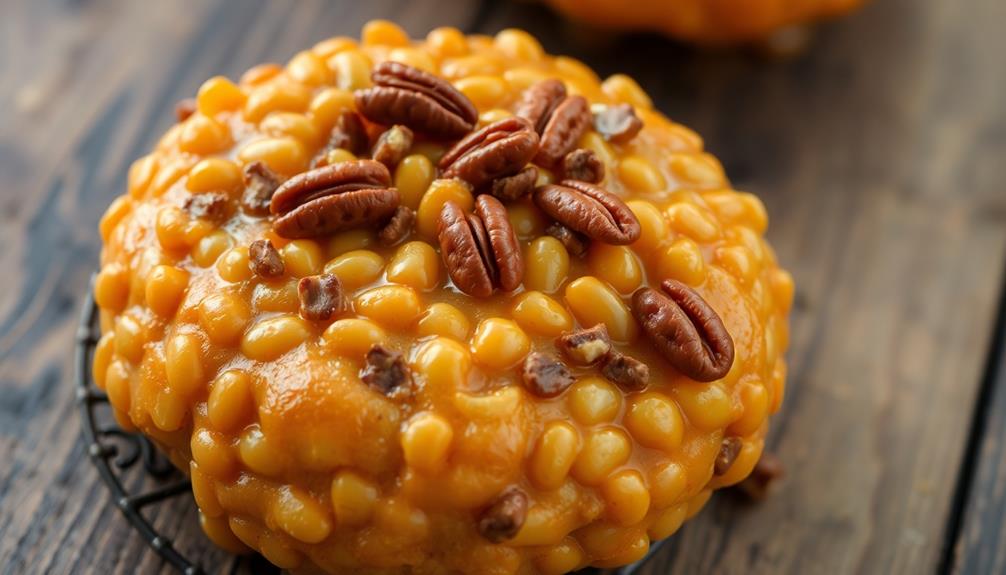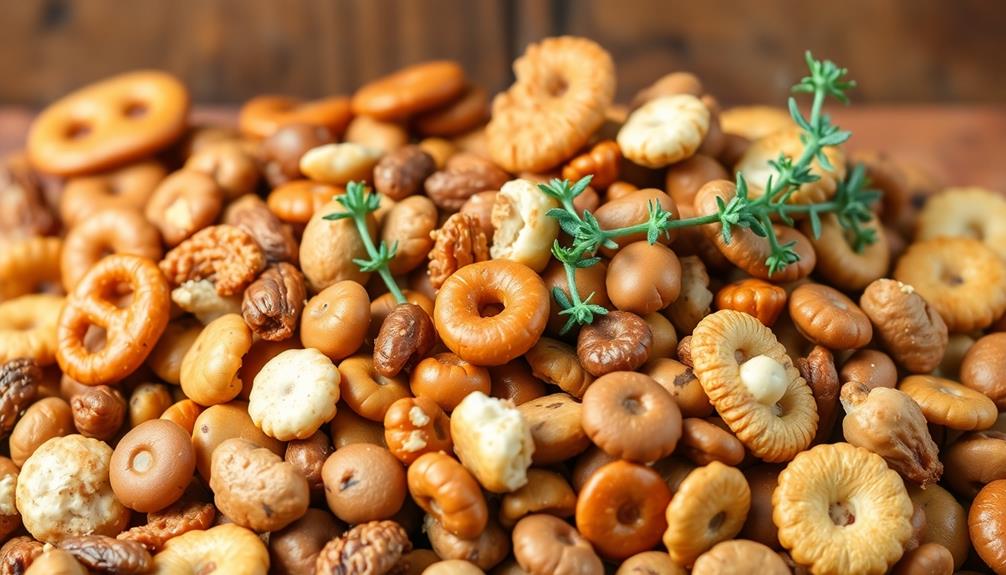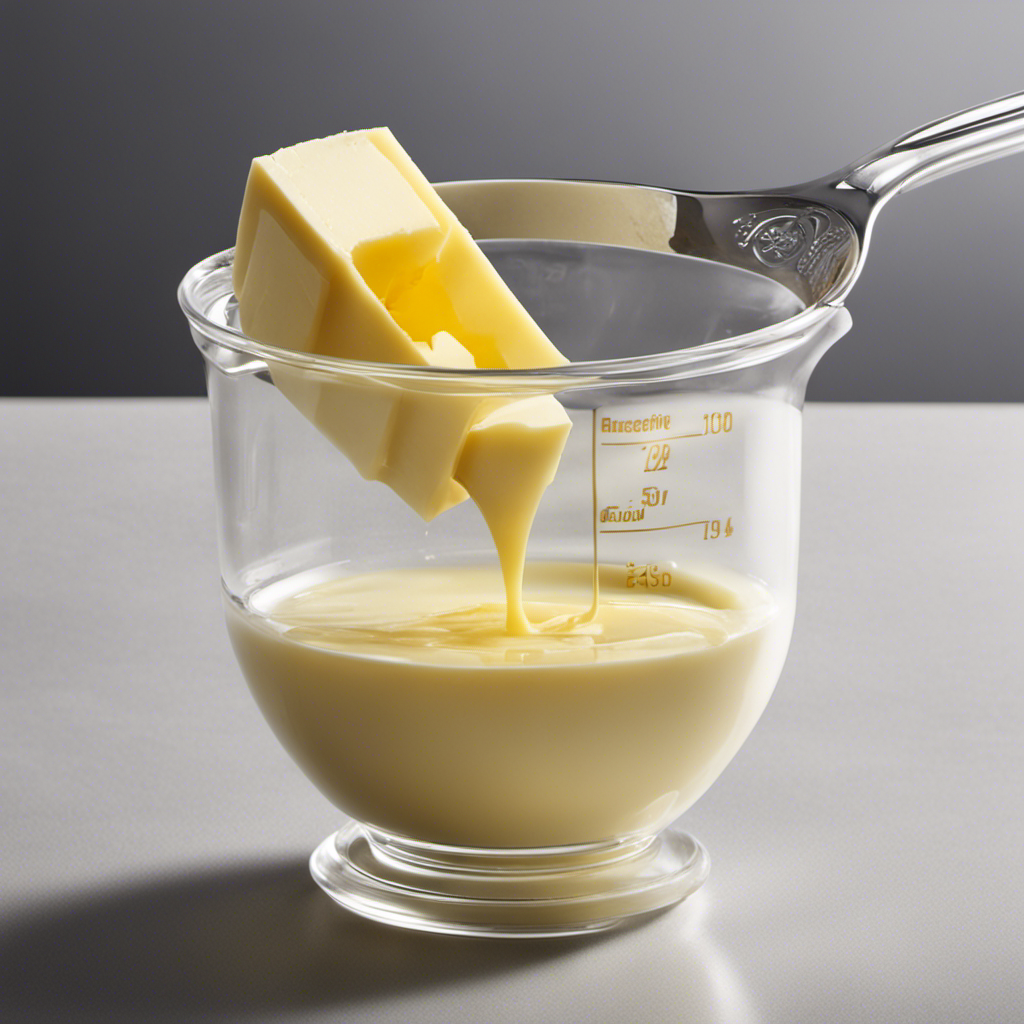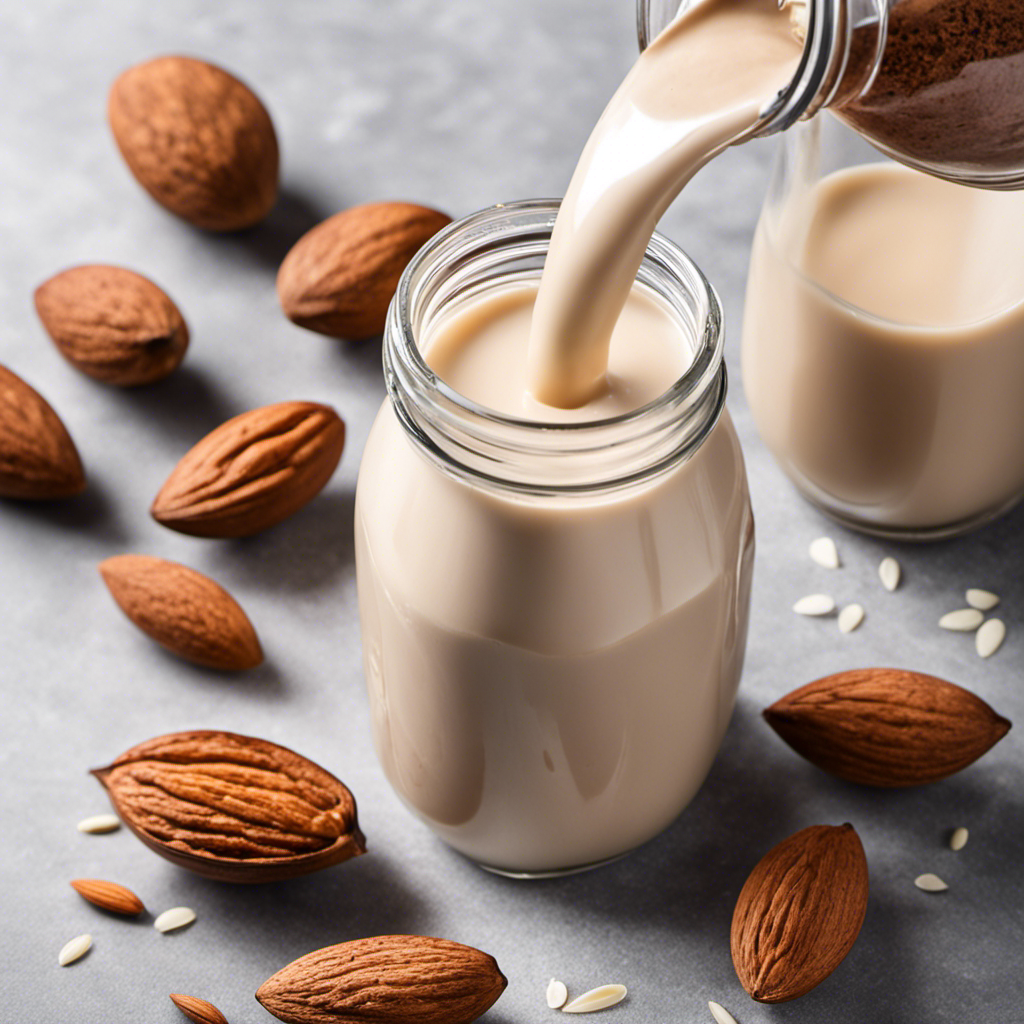Brown butter popcorn balls are a nostalgic treat that'll transport you back in time. Originating with Native American tribes centuries ago, these sweet and savory snacks combine the rich, nutty aroma of caramelized brown butter with the satisfying crunch of freshly popped corn coated in a simple syrup glaze. Perfect for festive parties, their layered flavors and chewy-yet-crunchy texture create a unique taste experience that'll have your guests reaching for more. With easy-to-follow steps and customizable toppings, you can whip up a batch that'll elevate any gathering – and inspire you to dig deeper into the history and evolution of this beloved treat.
Key Takeaways
- Brown Butter Popcorn Balls are a nostalgic treat with a rich, nutty flavor, combining sweet, salty, and buttery elements for a delightful taste experience.
- The key ingredient, brown butter, enhances the flavor through a caramelized aroma, creating a unique and gourmet taste that elevates ordinary popcorn.
- Popcorn Balls are a versatile party snack, as they can be personalized with various toppings or mix-ins and are suitable for all ages.
- The chewy, buttery center contrasts with a satisfying crunch, providing a layered flavor profile that surprises and delights the palate.
- Popcorn Balls are a crowd-pleasing treat that adds autumn whimsy to party spreads and enhances the festive atmosphere, making them perfect for holiday gatherings and celebrations.
History

Popcorn balls have a rich history, with origins tracing back to Native American tribes who crafted the snack as early as the 1600s.
These indigenous communities would pop corn kernels and shape them into round balls, often adding nuts, dried fruits, or other ingredients to create a delightful treat.
As the tradition spread, early settlers in the American Midwest embraced popcorn balls, evolving the recipe over time.
Recipe

Brown Butter Popcorn Balls
Recipe
Popcorn balls are a classic treat that bring back nostalgic memories of childhood. This version takes the humble popcorn and elevates it with the rich, nutty flavor of brown butter. The result is a delightful balance of sweet, salty, and buttery goodness that's sure to delight your taste buds.
Preparing the brown butter is the key to this recipe. The browning process deepens the flavor and creates a lovely caramelized aroma that will permeate your kitchen. Once the butter is ready, it's combined with a simple syrup to coat the fresh popcorn, ensuring every kernel is coated in the irresistible mixture.
Ingredients:
- 8 cups popped popcorn
- 1/2 cup unsalted butter
- 1 cup granulated sugar
- 1/4 cup light corn syrup
- 1/4 teaspoon salt
Instructions:
In a saucepan, melt the butter over medium heat, stirring frequently, until it turns a deep golden brown and develops a nutty aroma, about 5-7 minutes. Carefully pour the browned butter into a heatproof bowl, being sure to scrape up any browned bits. Set aside.
In the same saucepan, combine the sugar, corn syrup, and salt. Cook over medium heat, stirring constantly, until the mixture comes to a boil. Continue to cook, without stirring, until it reaches 235°F on a candy thermometer, about 5-7 minutes.
Remove the pan from the heat and carefully pour the hot syrup into the browned butter, stirring to combine. Quickly pour the mixture over the popcorn and stir to evenly coat.
Working quickly, use greased hands to form the coated popcorn into small balls, about 2 inches in diameter. Place the popcorn balls on a parchment-lined baking sheet and allow them to cool and firm up, about 15-20 minutes.
Tips:
- For best results, use freshly popped popcorn. The warm kernels will help the brown butter and caramel mixture adhere better.
- Be cautious when handling the hot sugar syrup, as it can cause serious burns. Wear oven mitts and work carefully.
- Store the popcorn balls in an airtight container at room temperature for up to 3 days.
Cooking Steps
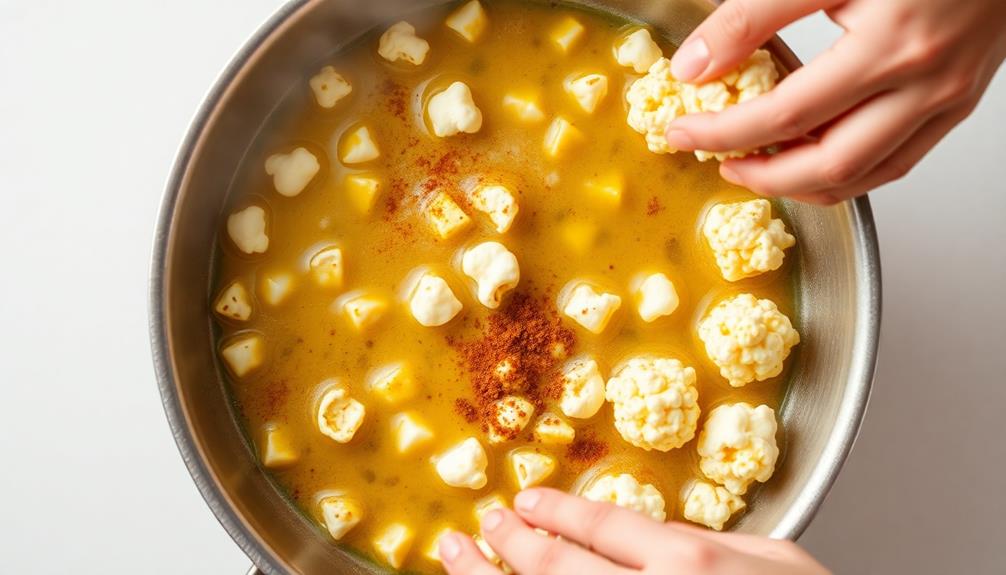
First, melt the butter in a saucepan over medium heat until it's nice and browned.
Then, add the popcorn and give it a good stir to coat it evenly in that delicious nutty butter.
Now, it's time to get your hands dirty – form the buttery popcorn mixture into fun, bite-sized balls.
Let those popcorn balls cool down just a bit before you coat them in a sweet caramel glaze.
Step 1. Melt Butter in Saucepan
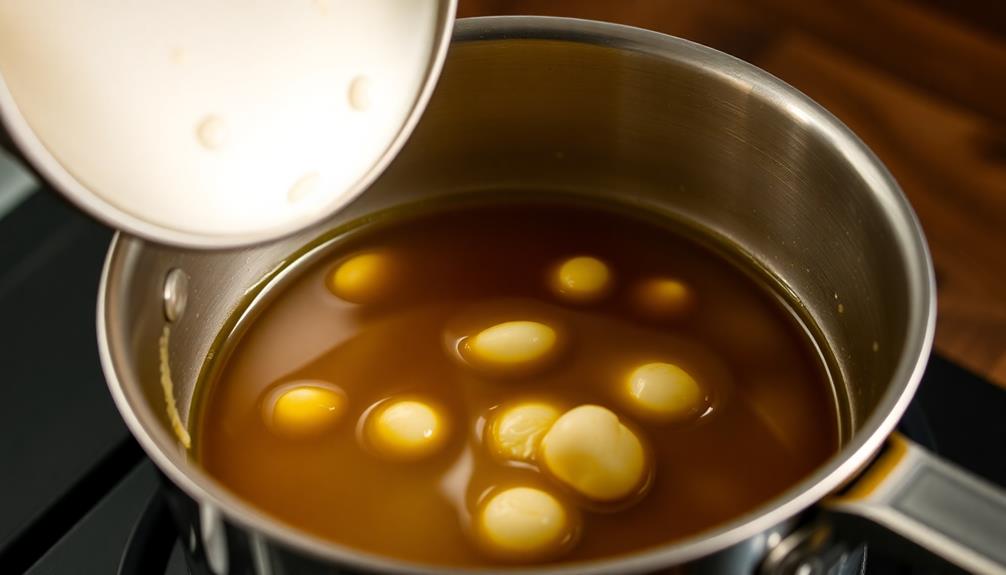
Melt the butter in a saucepan over medium heat, ensuring it's thoroughly liquefied and golden-brown in color. As the butter sizzles and transforms, keep a close eye on it, stirring occasionally to promote even heating.
You'll know it's ready when the butter takes on a nutty, toasted aroma and the milk solids have caramelized, creating a rich, decadent flavor.
Don't be tempted to rush this process – the key is to let the butter gently brown, allowing the flavors to develop fully.
Once you've achieved that perfect shade of amber, remove the saucepan from the heat and set it aside, ready to incorporate into your popcorn ball mixture.
This brown butter will add a luxurious depth of flavor that will have your guests coming back for more.
With a little patience and attention, you're well on your way to creating a truly memorable batch of brown butter popcorn balls.
Step 2. Add Popcorn to Melted Butter
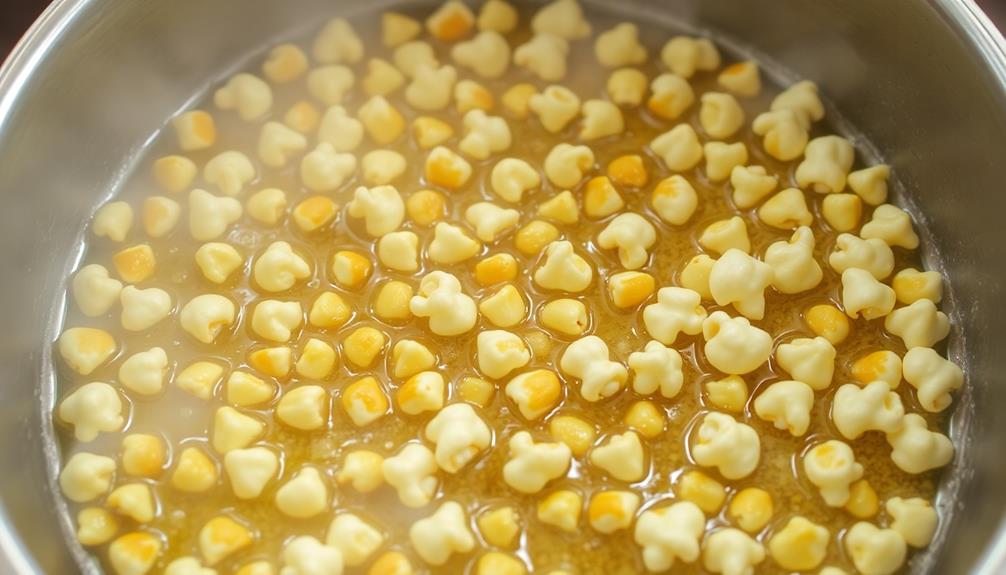
With the nutty brown butter ready, gently fold the freshly popped popcorn into the melted mixture. The popcorn should sizzle and crackle as it's coated in the rich, aromatic butter.
This sensory experience not only delights the taste buds but also engages cognitive functions, as cooking can enhance creativity and problem-solving skills in children (importance of understanding child development).
Use a large spoon or spatula to carefully incorporate all the fluffy popcorn kernels, making sure they're evenly distributed and thoroughly coated. The popcorn will start to form little clusters as the butter clings to the surfaces.
Be gentle during this process – you don't want to crush the delicate popcorn. Take your time and work slowly, savoring the satisfying sound and scent.
Once the popcorn is fully coated, it's ready for the next step of shaping into irresistible balls. This simple addition of popcorn transforms the brown butter into a delightful, texture-packed base for the sweet and savory popcorn balls.
The contrast of the crisp, airy popcorn and the decadent brown butter is absolutely divine.
Step 3. Form Popcorn Mixture Into Balls

To form the popcorn mixture into irresistible balls, scoop up generous handfuls of the buttery kernels and gently pack them together.
Roll the mixture between your palms, applying light pressure to shape them into perfectly round spheres. Picture the golden, toasted popcorn coated in the rich, nutty brown butter – it's a sensory delight!
As you work, the warmth of your hands will help the mixture hold its form.
Carefully place each popcorn ball onto a parchment-lined baking sheet, arranging them with care. This allows the balls to cool and set without sticking together.
Once you've formed all the popcorn into tempting little orbs, pop them in the fridge for 30 minutes. This quick chilling will firm up the butter, ensuring your popcorn balls maintain their irresistible shape.
Now they're ready to dazzle your guests! Serve these brown butter popcorn balls as a unique and flavorful party snack. Their sweet and savory goodness is sure to delight.
Step 4. Let Popcorn Balls Cool Slightly
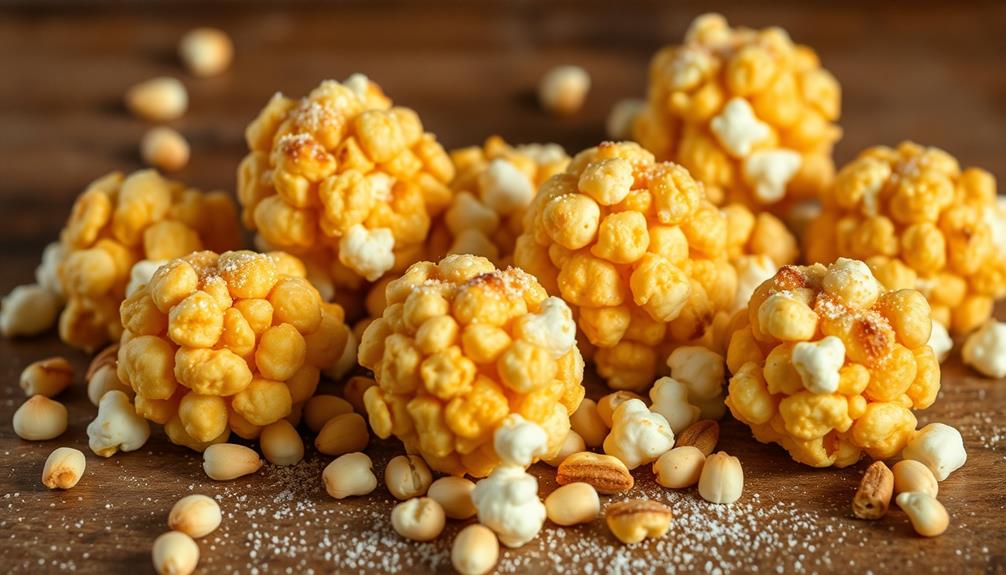
After forming the popcorn balls, you'll want to let them cool slightly before serving. This brief pause allows the brown butter and sugar coating to set, ensuring the popcorn balls hold their shape and don't fall apart when you pick them up.
You can place the freshly-formed balls on a parchment-lined baking sheet or plate, giving them a few minutes to firm up. The sweet, nutty aroma of the brown butter will waft through the air, tempting you to dive right in.
But resist the urge – let them cool for 2-3 minutes first. This short wait is worth it, as the popcorn balls will have a delightful, crisp exterior that gives way to a soft, pillowy interior.
Once cooled, the popcorn balls are ready to be enjoyed as a tasty snack or incorporated into your party spread. Their perfectly round shape and golden-brown hue make them an eye-catching addition to any gathering.
Step 5. Coat Popcorn Balls With Caramel
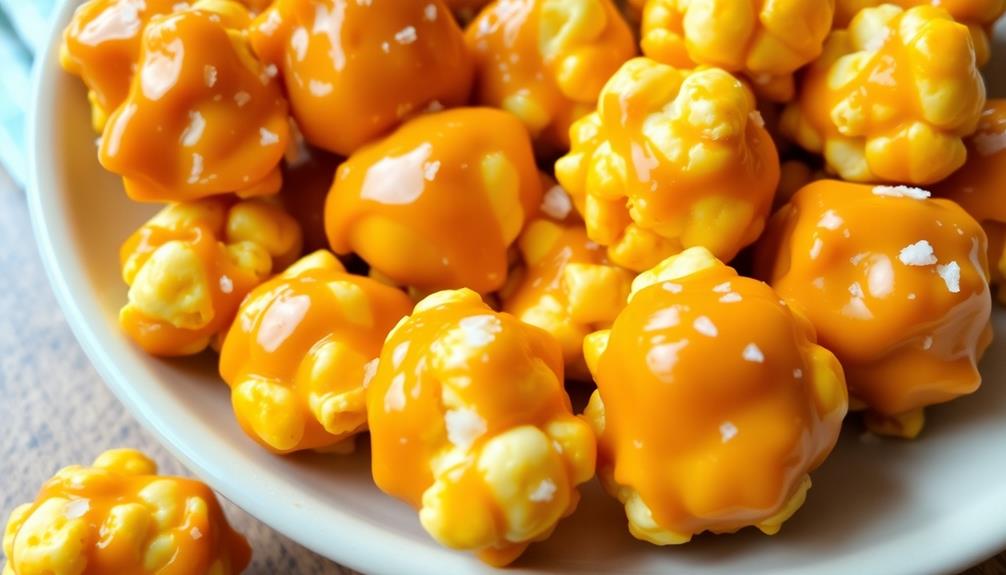
Once the popcorn balls have cooled slightly, it's time to coat them in a delectable caramel glaze.
Grab a medium-sized saucepan and melt some butter over medium heat. Once the butter starts to sizzle and turn golden brown, carefully pour in some light corn syrup and granulated sugar. Stir the mixture continuously until it reaches a rich, amber color and a temperature of 235-240°F on a candy thermometer.
Carefully dip each popcorn ball into the hot caramel, using a fork or spoon to gently roll it around until it's completely coated. Allow any excess caramel to drip off before transferring the coated balls to a baking sheet lined with parchment paper.
Work quickly, as the caramel will start to firm up as it cools. Once all the popcorn balls are coated, let them sit until the caramel has set, about 15-20 minutes.
The result is a delightfully sweet and crunchy treat that's perfect for sharing at parties or enjoying as a special snack.
Final Thoughts

Ultimately, how do these brown butter popcorn balls measure up? They're a true crowd-pleaser – the perfect balance of sweet and savory that'll have your guests coming back for more.
The caramelized brown butter coating adds a delightful depth of flavor, elevating the humble popcorn to new heights. Bite into one, and you'll be met with a satisfying crunch that gives way to a chewy, buttery center. It's a textural delight that keeps you coming back for another handful.
What sets these popcorn balls apart is the attention to detail. The careful layering of flavors, from the nutty brown butter to the hint of salt, creates a flavor profile that's both familiar and unique.
Additionally, just like the cherished bread pudding, which transforms stale bread into a comforting dessert, these popcorn balls utilize simple ingredients to create something truly special.
And let's not forget the festive factor – these balls are the perfect addition to any party spread, adding a touch of autumn whimsy that's sure to delight.
Frequently Asked Questions
How Long Do the Popcorn Balls Last?
The popcorn balls should last for up to a week when stored in an airtight container at room temperature. They'll stay fresh and maintain their delicious flavor and texture if you take proper care of them.
Can the Popcorn Balls Be Frozen?
Yes, you can freeze the popcorn balls. They'll keep for up to 3 months in the freezer. Just be sure to wrap them tightly in plastic wrap or place them in an airtight container before freezing.
Can I Use Microwave Popcorn for This Recipe?
You can certainly use microwave popcorn for this recipe. It'll save you the time and effort of popping the kernels yourself. Just be sure to adjust the seasoning and cooking time as needed to accommodate the pre-popped nature of the microwave popcorn.
Are the Popcorn Balls Gluten-Free?
The popcorn balls are not inherently gluten-free. While the main ingredient, popcorn, is naturally gluten-free, the recipe may contain other ingredients that contain gluten. To make them gluten-free, you'd need to use gluten-free substitutes for any gluten-containing ingredients.
What Are Some Variations to the Recipe?
To vary the recipe, you could try using different nuts, dried fruits, or even a touch of spice. Swap out the brown butter for other flavors like caramel or cinnamon. Get creative and make it your own!
